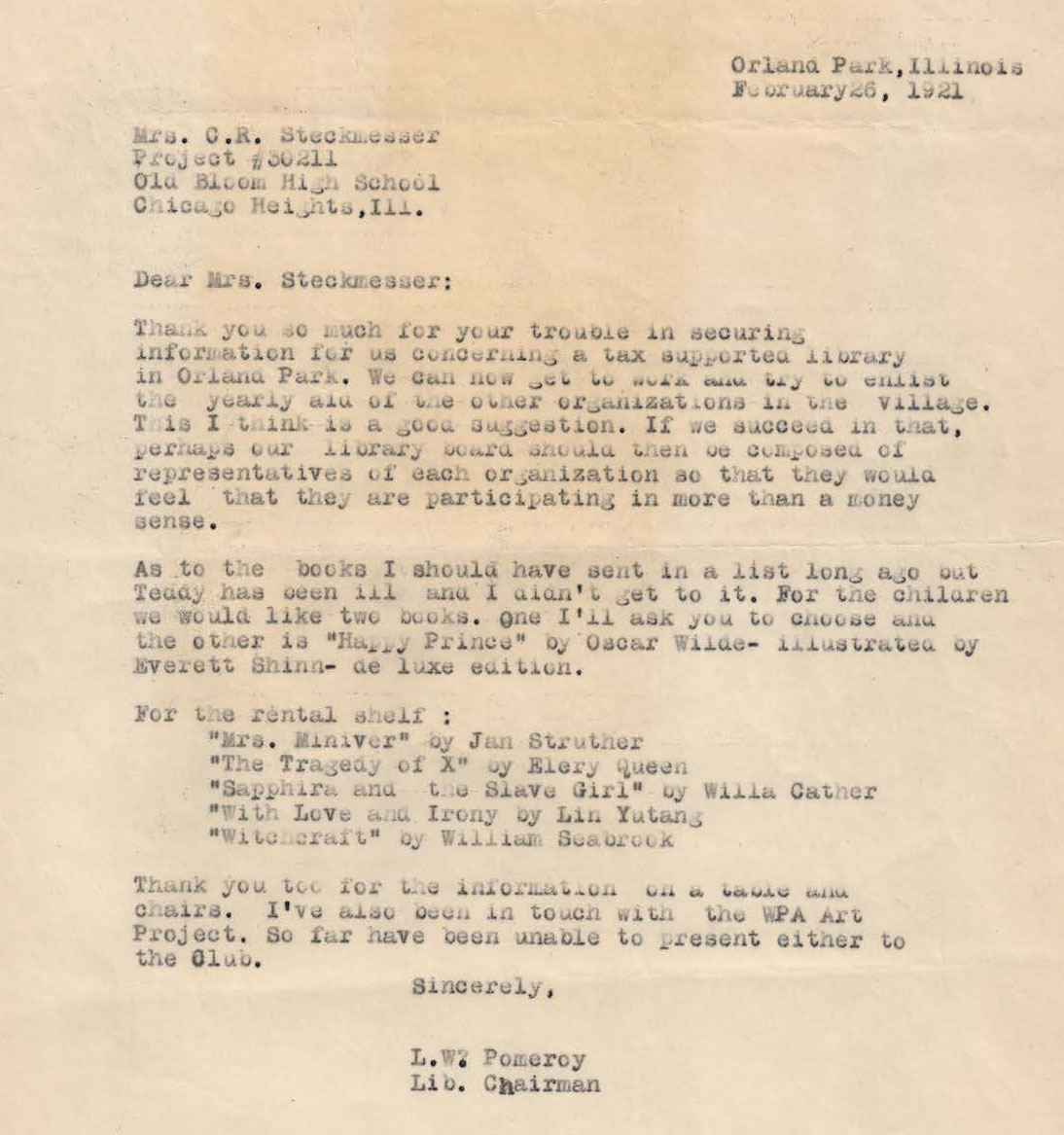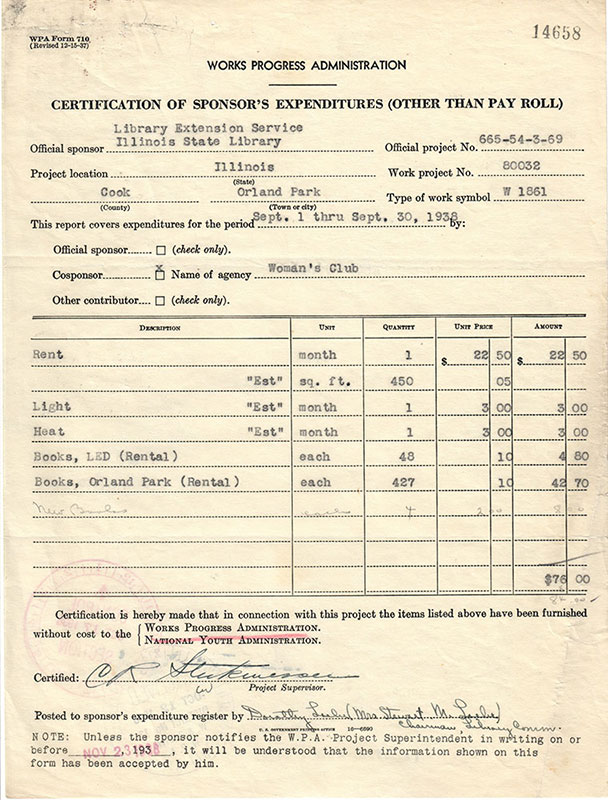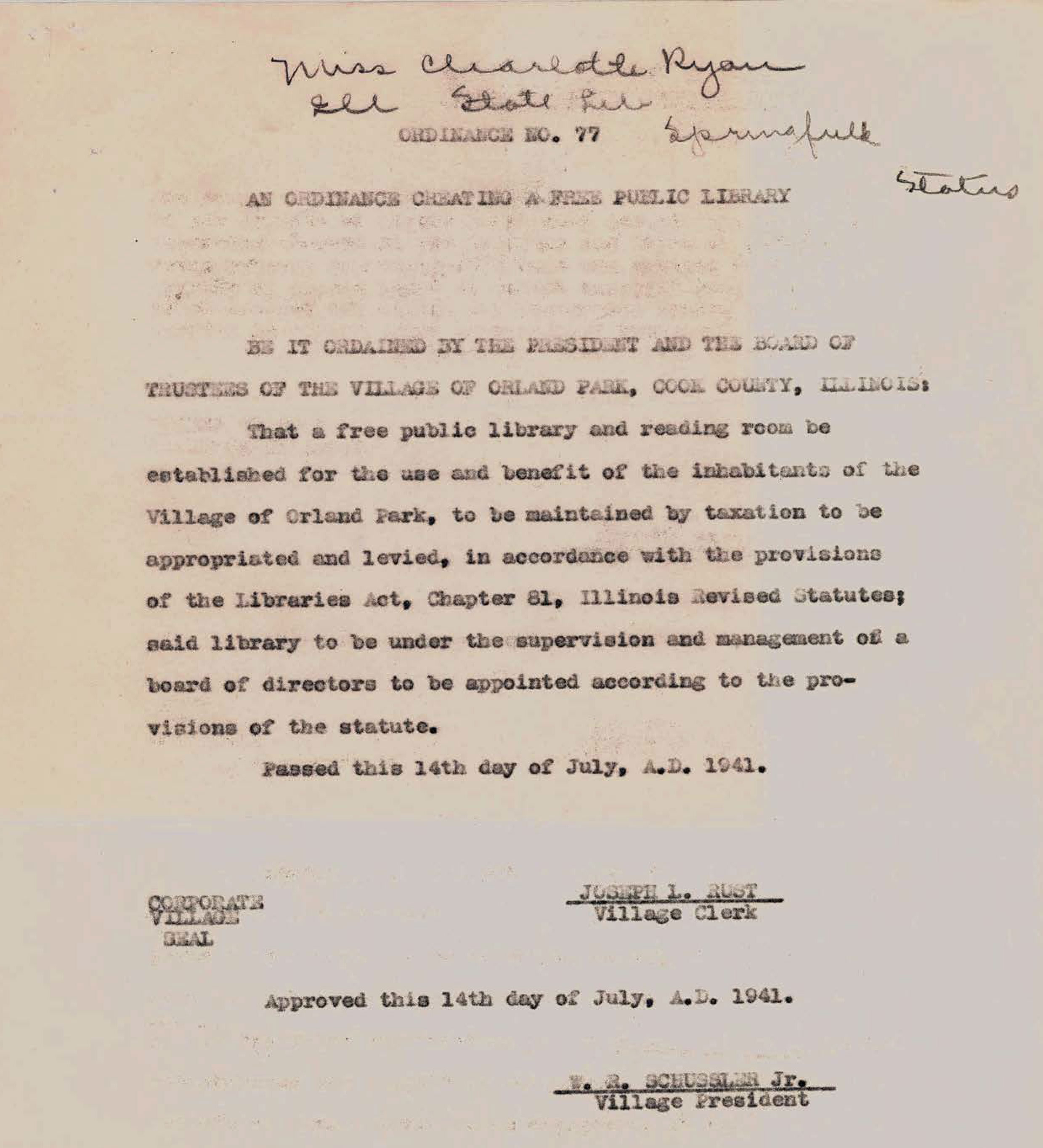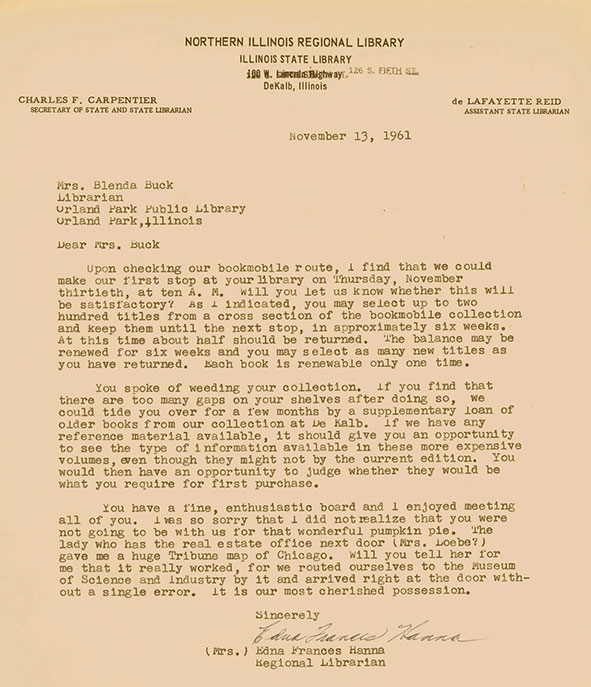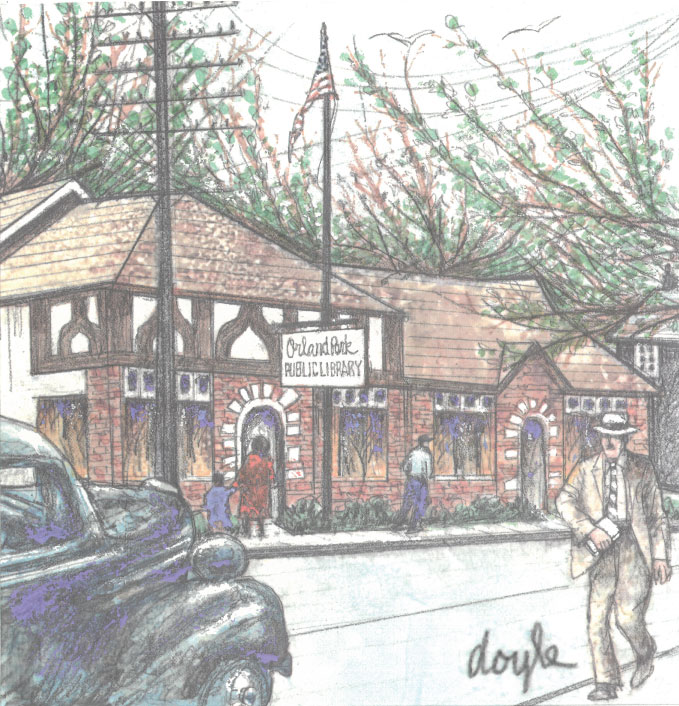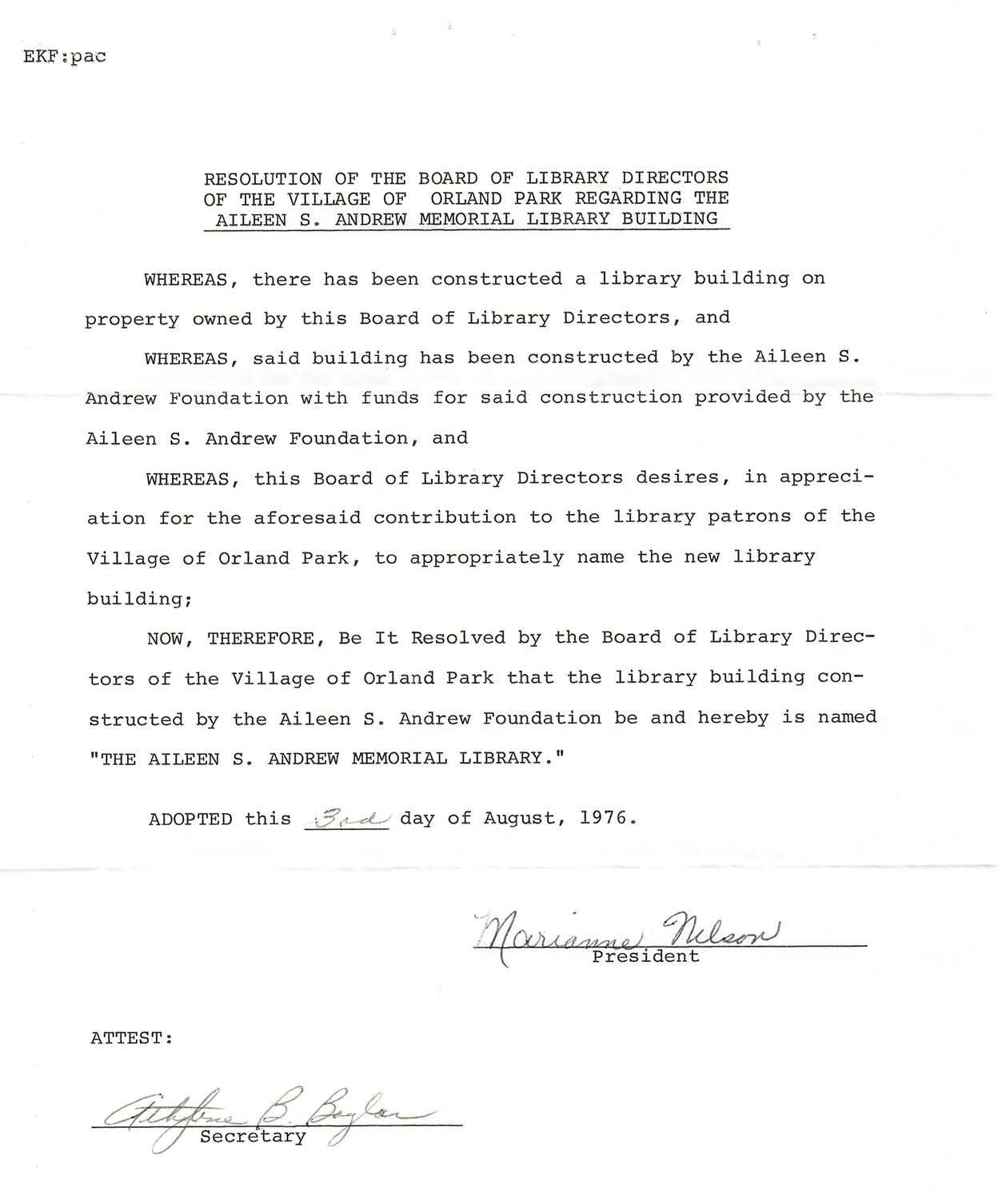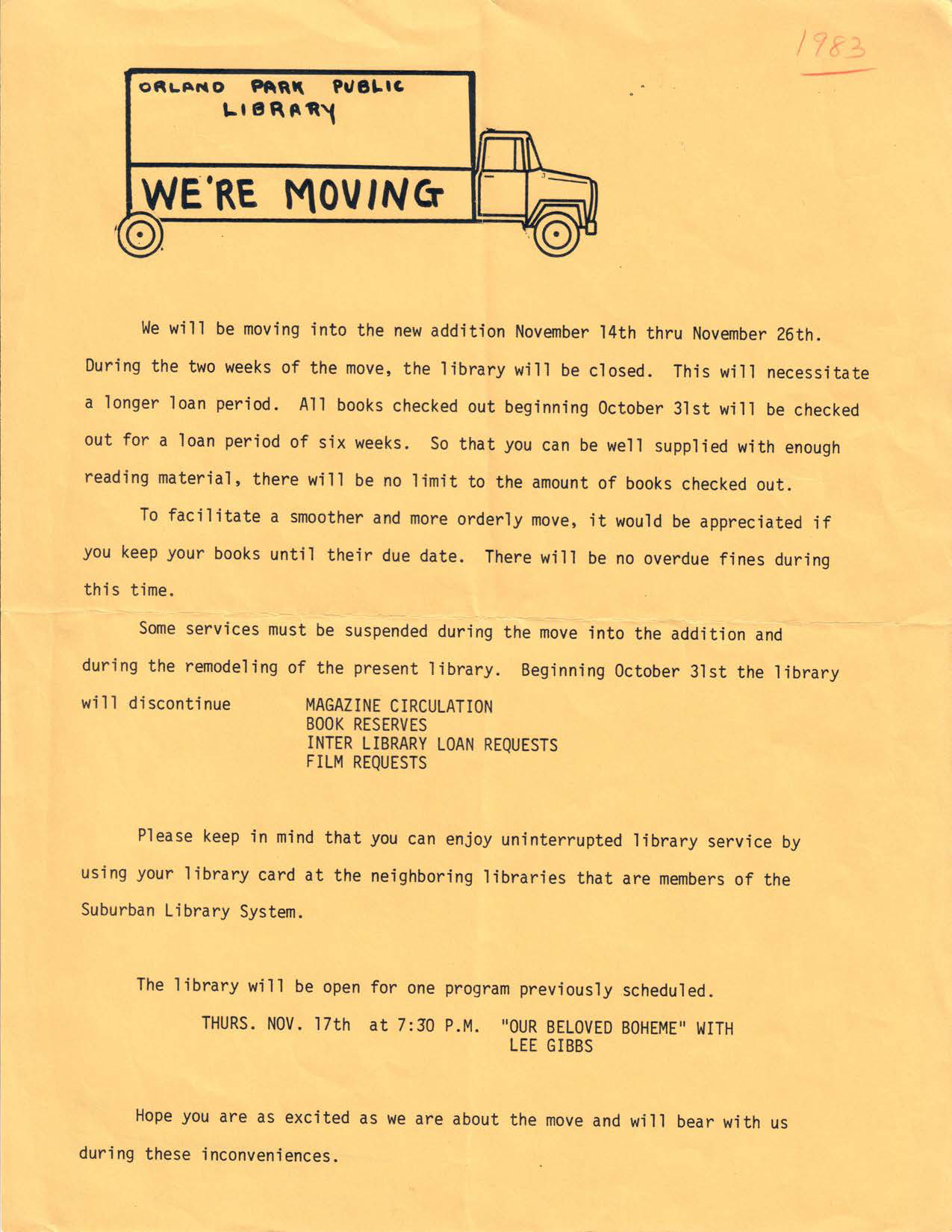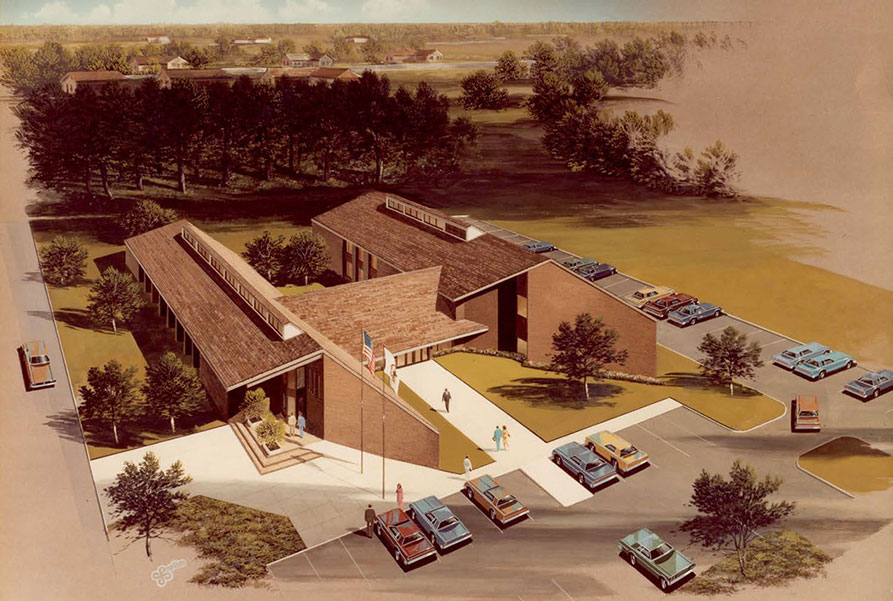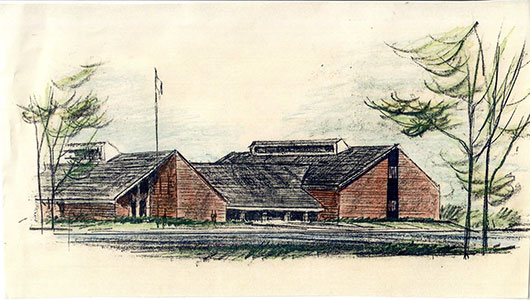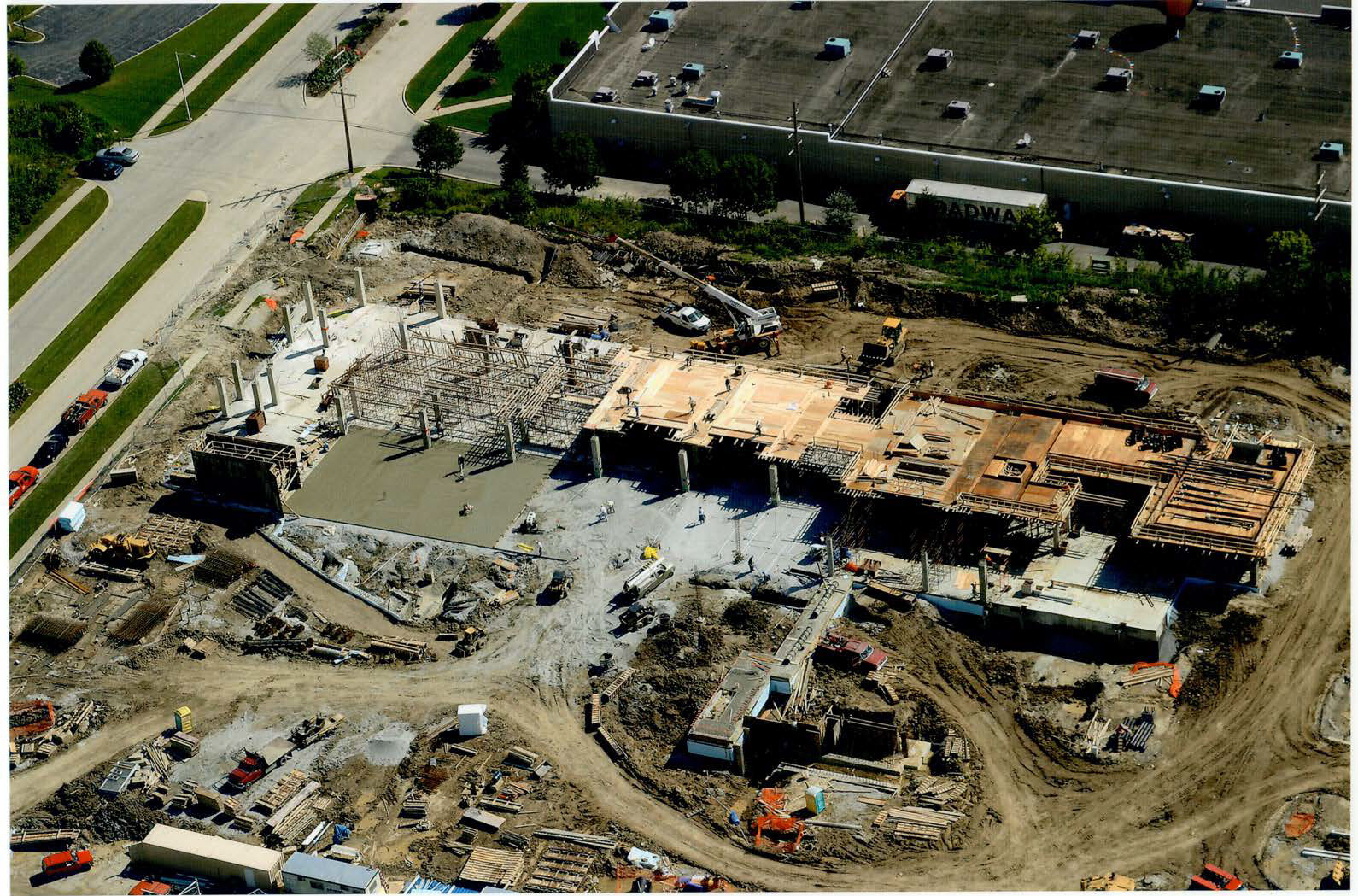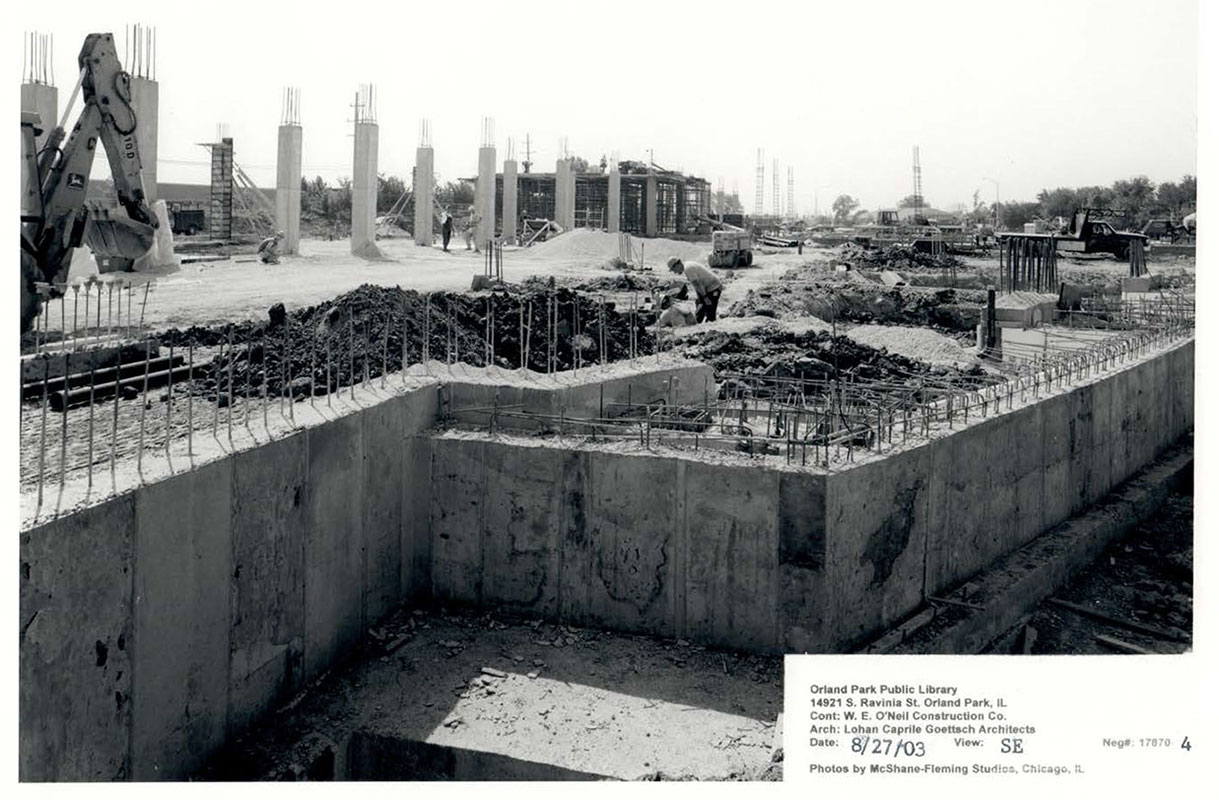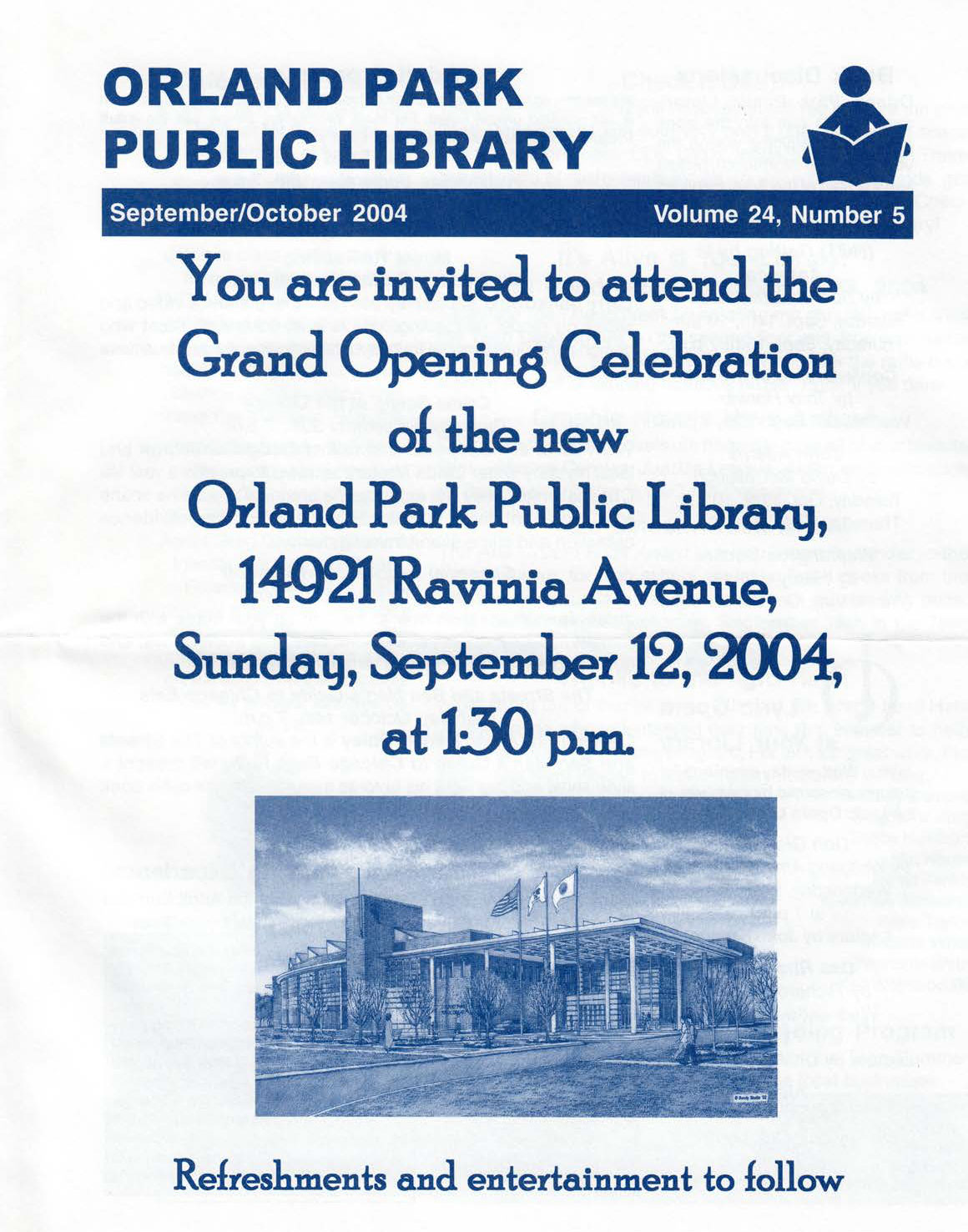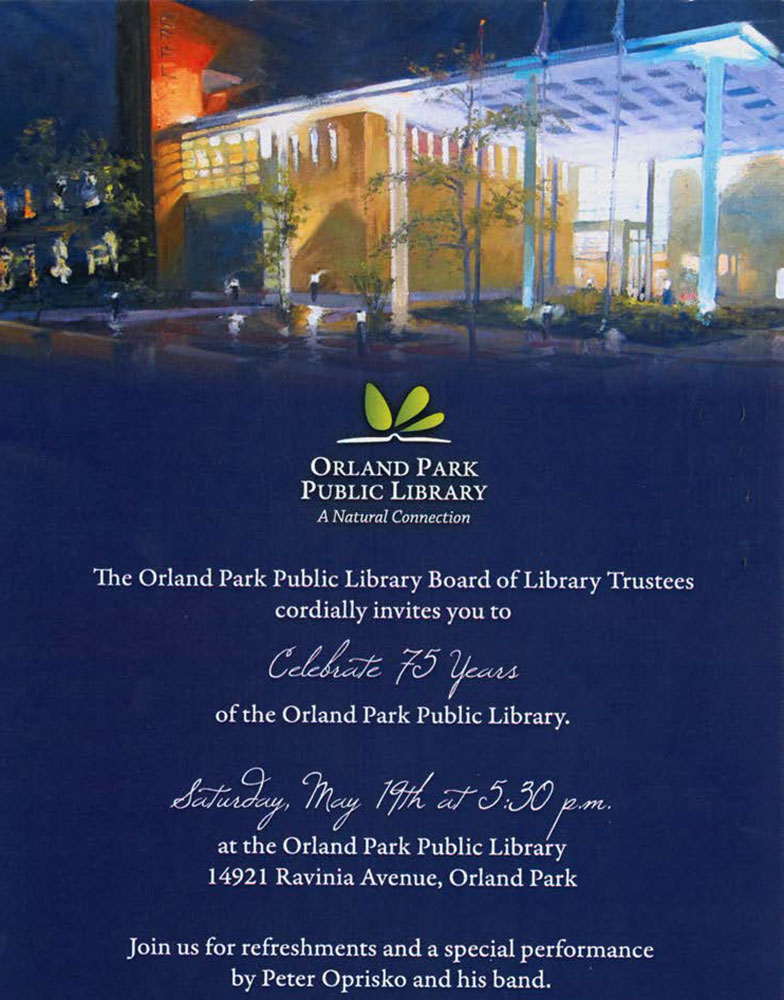The Founding and Historical Documents Project
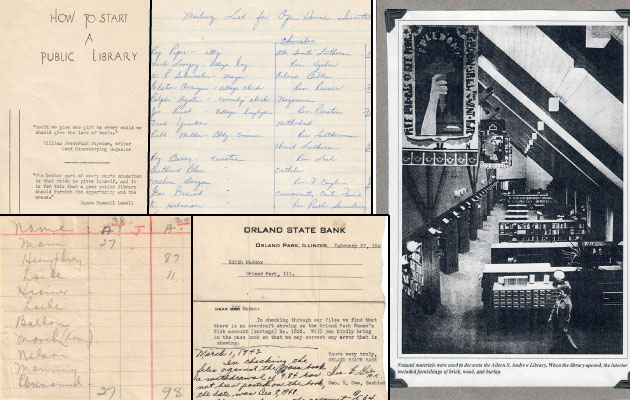
The Founding and Historical Documents Project aims to share the Orland Park Public Library story by creating a digital collection of historical papers from our library’s founding,
from its inception as a dream of the Orland Park Women’s Club, all the way up to today.
Exploring the roots of the library, it becomes clear how intertwined the library and the community have become over the course of almost a century of serving Orland Park.
We are happy to finally be able to share this history of how we have grown, together.
What We Learned:
As working with any artifact or item with much age, aspects of the item change over time. Once the first hand touches an item it begins to change. As a team we were always mindful to handle our artifacts minimally and with as much care as possible so as to not stress the items.
Another lesson learned was that although the majority of items are documents, that doesn’t mean that, edges are straight or that type is level on each page. Many of our documents have irregular edges as the item was created before the benefit of laser cutting technology. Viewers will notice that it is a rare page that has a straight edge. Also of note is the use of carbon paper used to create a second copy. Those who have used this material understand that a certain amount of slippage was expected and typing often runs on a slant.
Our team believes these wonderful components are part of the charm and “Story” of this collection and we have not gone to any lengths to correct the digital representations. They are part of the history of the Orland Park Public Library.
Artwork used for the title background by Michael DePeder
Artwork used for the page background by Patrick Doyle
Documents
Total items: 957
Category List
Images of some documents

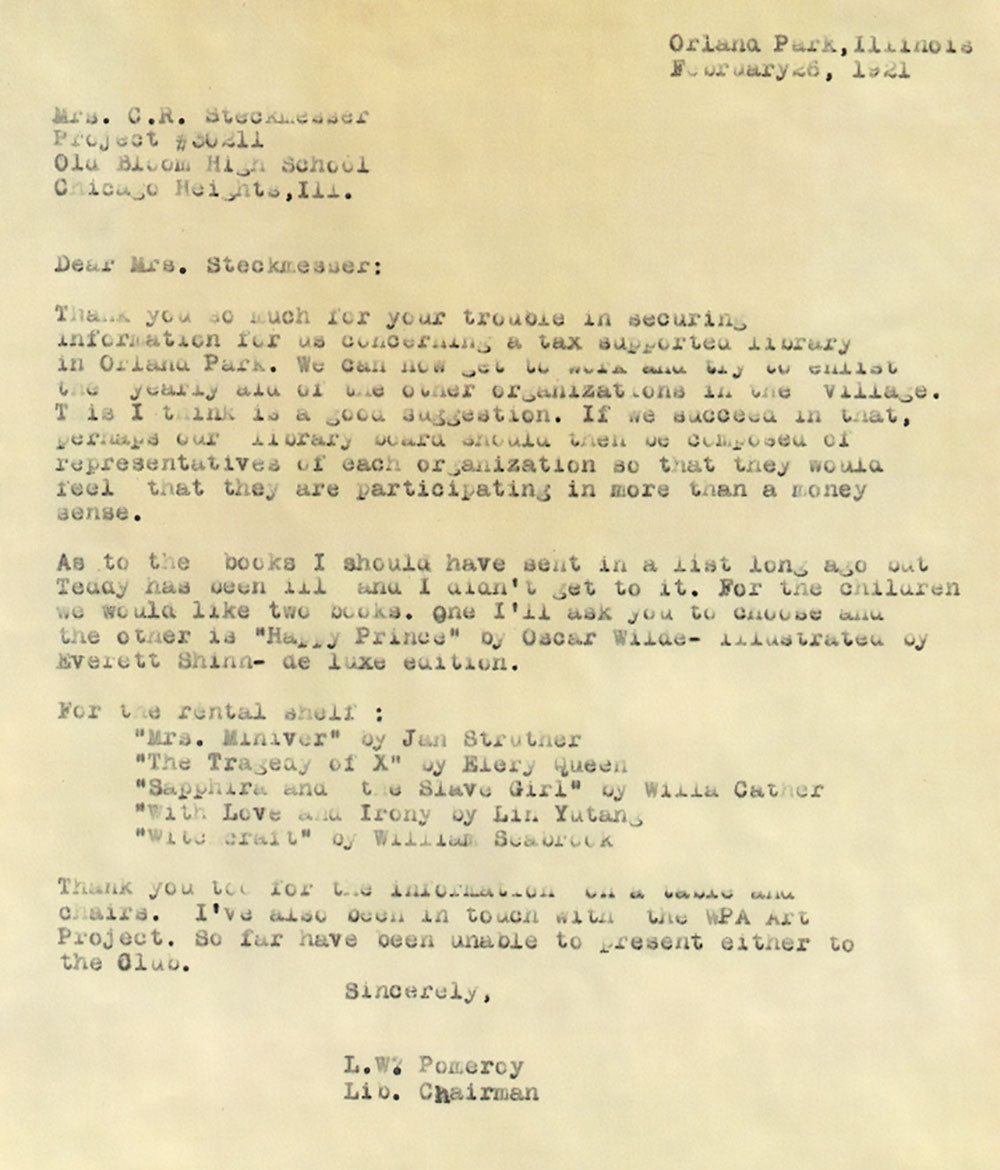

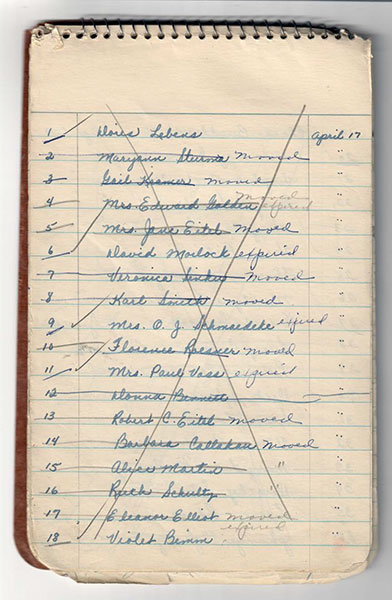
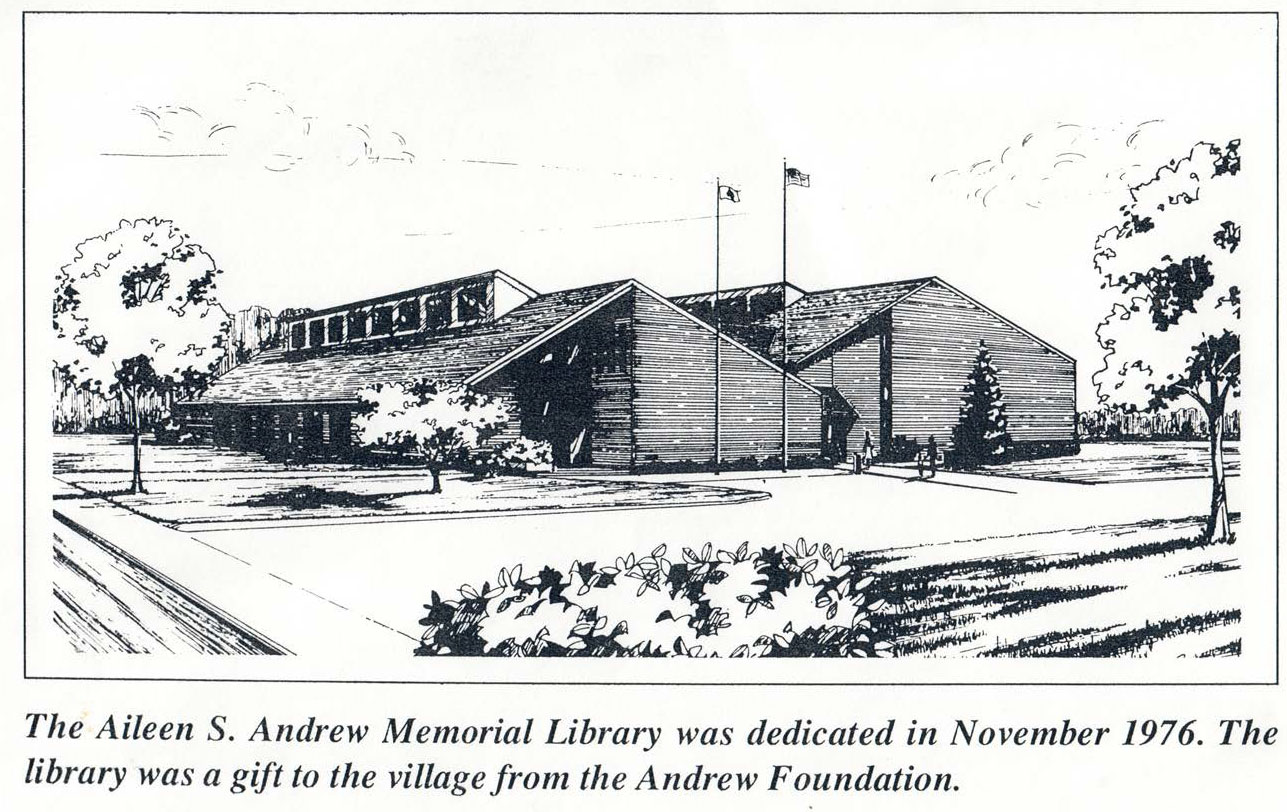
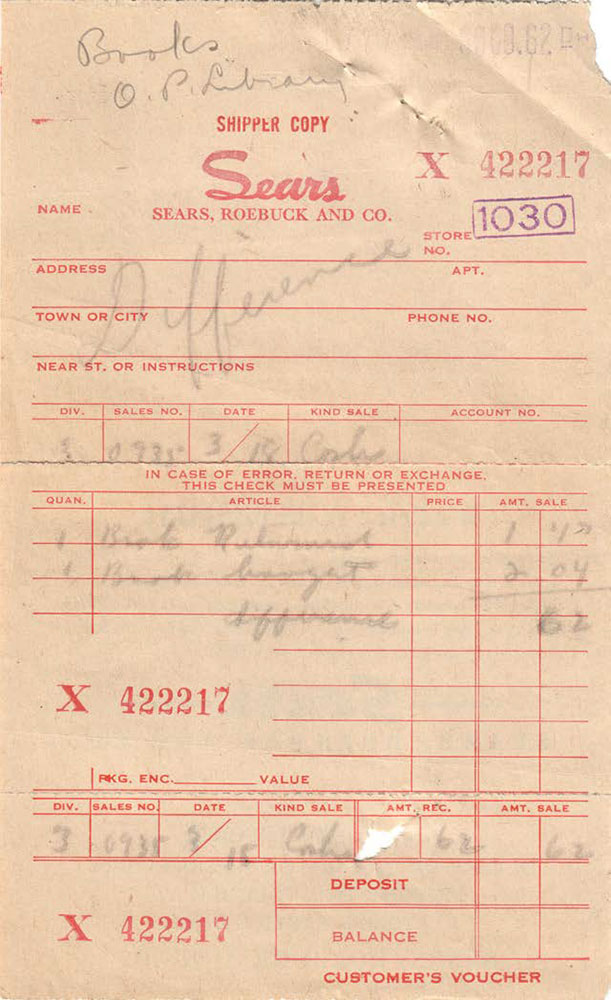
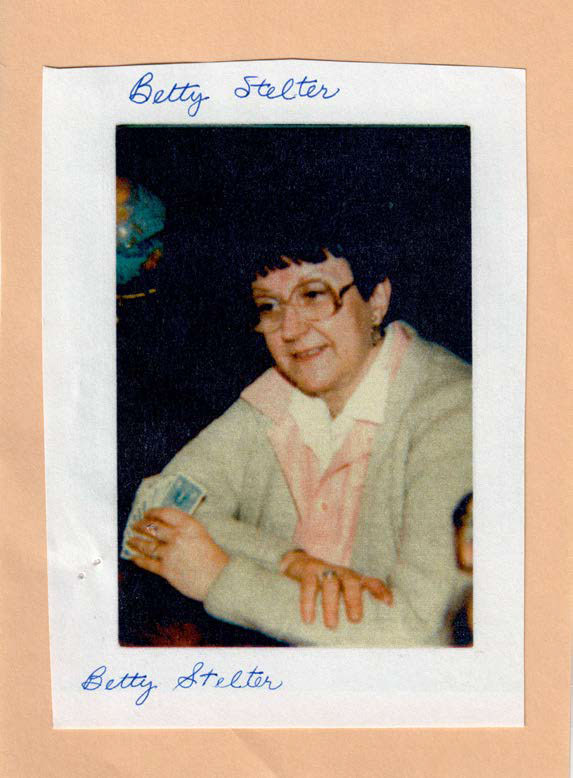

Orland Park Public Library History Timeline:
1921
This is the earliest confirmed acquisition year on any document in the collection, and it appears on a letter from Leila Pomeroy of Orland Park to Mrs. Steckmesser of the WPA.
It is the earliest record we have of the library in its earliest stages, when Mrs. Pomeroy and the Woman’s Club were just learning how to start a tax funded library.
“We can now,” Leila writes, “get to work.”
1937
The Orland Park Public Library was formed in 1937 when the Orland Park Women's Club decided to make the founding of a public library its major activity for the year. Partial funding was provided by a WPA library project through the Illinois State Library Extension board in Springfield. Mr. Roy Loebe donated the Purple Candle Building to use rent-free. Many other donors contributed to the fledging library.
1941
In 1940 the population of Orland Park was 631. In 1941 the Village Board passed an ordinance establishing a free public library operated by volunteers and stocked by donations.
1943
In 1943 a referendum was passed allowing taxes to be levied for the operation of the library
1960
By 1960 the population had grown to 2,592 and the library began receiving a new state library service, a bookmobile. This service continued until 1967 when the library joined the Suburban Library System.
1970
The population in 1970 was 6,391 and the Purple Candle Building simply could not hold another thing -- records were even stacked in a bathtub. Plans were made to move the library into a larger building.
1975
Expansion came in the form of a gift. As the Orland Park Herald reported in January 1975, "In an unprecedented gesture of largesse Andrew Corporation gave a gift of a new Library Building to the community of Orland Park at the Village Board meeting on January 13." The 7,000 square foot building, the Aileen S. Andrew Memorial, at 14760 Park Lane was dedicated on November 14, 1976.
1980
The Village of Orland Park kept growing; the population for 1980 was 23,045. The Andrew Foundation once again donated the needed money, providing an addition to the library building, which increased its size to almost 18,500 square feet. Besides the addition completed in August 1983, the library began contracting for bookmobile service from the Frankfort Public Library during the summer.
1990
The 1990 census reported 35,720 residents and the library was again in need of space. The Library Board purchased a bookmobile and an expansion of the building was approved. The second addition added the bookmobile garage, meeting room, boardroom, and Technical Services area. There was also a small remodeling project to add shelves for the public where the old Technical Services area had been. Financing, for the first time, was through a municipal bond issue.
2002
The Board of Trustees placed a referendum on the ballot to build a new facility to be located on 149th and Ravinia Avenue, replacing the current facility. The referendum passed with two-thirds of the votes in favor of the proposed building. Michael Barnes, an architect from Lohan Anderson, designed the 93,000 square foot building and W.E. O'Neil was chosen as the General Contractor.
2004
The new facility officially opened at 14921 Ravinia Avenue on September 12, 2004 and has won numerous awards for its building design.
2012
75th Anniversary Celebration
Frequently Asked Questions:
How are the documents organized?
When we began this project, we had over 1000 pages of documents in only a loose chronological order. The sheer volume required that we subdivide the collection into several categories, organized chronologically within themselves. There is some gray area: some letters from the WPA are sorted into the WPA Collection, for example, rather than Correspondence, but by making each entry searchable, we hope that you will find everything you are looking for.
How were the documents scanned?
Very carefully! Fortunately, we have some training and experience in the careful handling of delicate pieces thanks to the library’s NASA Special Collection.
Each piece was scanned using a standard flatbed scanner, front and back, as faithfully to the original document as possible.
One exception: careful examiners will notice that paperclips and staples appear to be missing in places. This was an intentional trade-off: while we want to present and preserve the documents in their original state, metal fastenings stain, warp, and discolor paper over the years. In the interest of the long-term health of the documents, they were carefully removed. Their original locations, along with the original layout of the stapled documents, was recorded just as carefully.
Where are the physical documents?
The original documents are housed at the library, within special archival boxes, made to be acid free and non-emissive, meaning that they do not give off gases that could harm the material of the documents.
Most importantly, they protect the documents from light, the most common source of damage for books and museum pieces alike.
The item ID, barcode, and call number do not have much use in the digital database, but by referring to these, library staff can look up and locate the physical document belonging to a database entry. However, if we strive for museum standards, the digitization project will hopefully minimize this:
each handling and exposure to light affects the document slightly, but irreversibly!
What are these blank pages?
Every page was scanned front and back, whether or not anything was printed on the back. The story of these documents is not told only in what was written, but how. Smudged ink, textured paper, rough cut edges and memos in the margins all serve to paint a picture of when and where each piece became part of library history, and we wanted to preserve as much context as possible.
What are all these numbers for?
These numbers are a peek “behind the scenes” at how the system created to quickly sort and organize the collection. The call number and barcode use exactly the same system as we use for books, making these documents an official (non-circulating) part of the library’s collection.
There is also an ID code [visible now only in the PDF file names] which gives a one or two character code indicating its category, followed by the “Batch Number”, referring to the groups each section was divided into for scanning, cropping, and registering. Finally, the last number indicates what number that item was within its batch, for a final format that looks like: XX-B-0-00.
Why are some items given ID numbers out of chronological order?
These items were all entered manually by the Archival Project Committee, and while we did develop a standardized procedure, we found several documents where only an approximate date could be confirmed, and its order in the timeline was not clear cut. Other documents were actually found and included in the project after others had already been entered. Fortunately, while this was a challenge during entry, it doesn’t affect the database’s ease of access.
What questions do you have?
Search Results:
Check Orland Park Founding and Historical Documents in our Catalog. Search by "OPPL Founding Documents".




